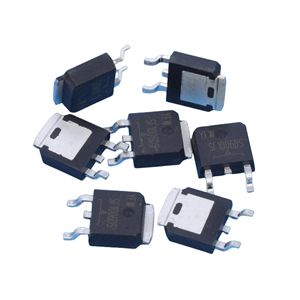Date:2024-11-16 Categories:Product knowledge Hits:372 From:Guangdong Youfeng Microelectronics Co., Ltd
The main characteristic of a diode is its unidirectional conductivity, which means that under the action of forward voltage, the on resistance is very small; Under the action of reverse voltage, the on resistance is very large or infinite. Crystal diodes detect radio waves in radios, convert alternating current into pulsating direct current in power conversion circuits, and act as contactless switches in digital circuits, all utilizing their unidirectional conductivity.
Crystal diodes can be divided into rectifier diodes, isolation diodes, Schottky diodes, light-emitting diodes, and voltage regulators according to their functions.
1. Identification method:
The identification of diodes is very simple. The n-pole (negative pole) of low-power diodes is mostly marked with one color circle on the surface of the diode. Some diodes also use diode specific symbols to represent the p-pole (positive pole) or n-pole (negative pole), and some use symbol marks such as "p" and "n" to determine the polarity of the diode. The positive and negative terminals of a light-emitting diode can be identified by the length of its pins, with the long pin being positive and the short pin being negative.
2. Main parameters
The rated forward working current refers to the maximum forward current value that a diode is allowed to pass through during long-term continuous operation. Because the current passing through the diode will cause the core to heat up and the temperature to rise. When the temperature exceeds the allowable limit (around 140 for silicon diodes and around 90 for germanium diodes), the core will overheat and be damaged.
The highest reverse operating voltage, when the reverse voltage applied across the diode reaches a certain value, will break down the diode and lose its unidirectional conductivity. In order to ensure safety during use, the maximum reverse working voltage value has been specified.
Reverse current refers to the reverse current flowing through a diode at a specified temperature and maximum reverse voltage. The smaller the reverse current, the better the unidirectional conductivity of the diode. It is worth noting that there is a close relationship between reverse current and temperature, with the reverse current doubling for every 10 degrees Celsius increase in temperature.

Previous: Classification, Structure, and Principle of MOSFET